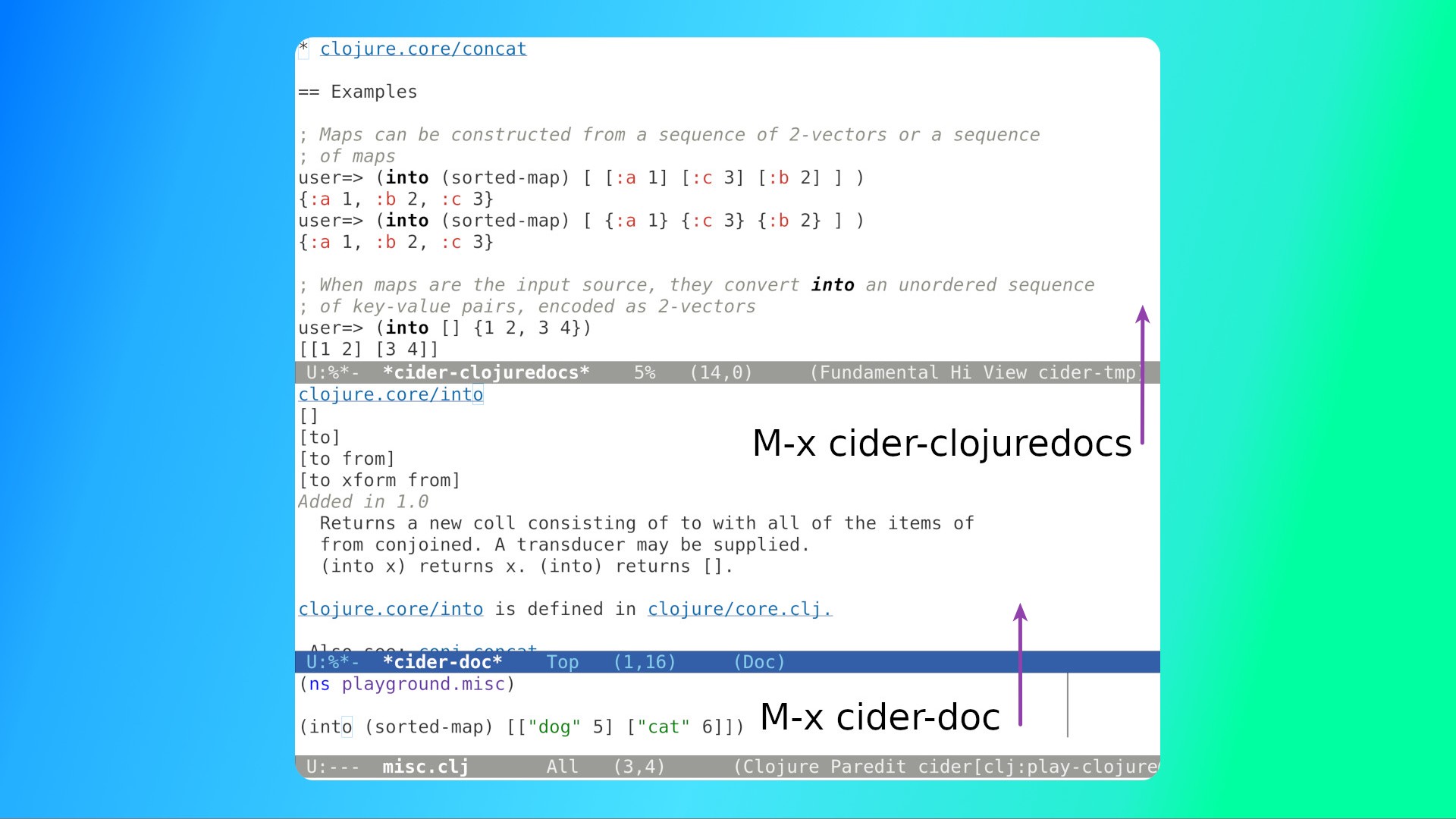-
C-M-x (cider-eval-defun-at-point)
- evaluate current top-level form.
-
C-x C-e (cider-eval-last-sexp)
- evaluate the preceding form.
-
C-c C-k (cider-load-buffer)
- evaluate/load the current buffer.
-
C-c C-p (cider-pprint-eval-last-sexp)
- Pprint the result in a dedicated buffer.
Great thing to do when the result is too large to fit in the echo area.
Note: I prefer to use the same key bindings as for Elisp, given that
cider might bind a few keys to a single command!
[Read More]
A Few Quick Notes About babashka/fs
Posted on 2024-12-07
(Last modified on 2024-12-19)
| 1 minutes
| 149 words
Recently I've used babashka/fs a little bit, here are some quick notes for it:
- Path vs File.
Use Path whenever possible, according to this SO answer to "Java: Path vs File".
This is actually Java related.
- It's ok to use a
path as a key for a clojure map.
At my first try, I somehow came to the conclusion that it's not ok, while I was refactoring the live reload for clay. And later I found that it's totally fine to use it as a key. 😞
- Use fs/path to construct file/directory paths, for example,
(fs/path "/tmp" "foo" "bar" "baz.clj") will result in a path object for /tmp/foo/bar/baz.clj on linux.
If you're coming from Python, it might remind you of os.path.join(path, *paths).
- Use
fs/createdirs for mkdir -p, though its name is a bit misleading, I first thought it's for creating a few dirs.
fs/with-temp-dir is convenient for creating tests.
Doing Unit test in Clojure Is Easy
Posted on 2024-11-28
(Last modified on 2025-02-26)
| 1 minutes
| 165 words
While refactoring the live reload feature of Clay, I realized I'd better break long functions into smaller and functional ones (as many as I can), which is also a common practice in the clojure community.
Small pure functions not only are easy to verify on the development process (using a REPL), but also are easy to test. And unit tests are easy to write in clojure, just use deftest from clojure.test, a very basic one looks like this:
[Read More]
Starting a Clojure nREPL Manually for Cider
Posted on 2024-11-08
(Last modified on 2025-02-18)
| 1 minutes
| 174 words
While troubleshooting and fixing a live reload bug in Clay today, which required to start a minimal Clojure environment, I figured out how to start a nREPL from the command line.
Instead of using M-x cider-jack-in-clj directly from Emacs, actually we can manully bring up an nREPL with this: clj -Sdeps "{:deps {org.scicloj/clay {:mvn/version \"2-beta21\"} cider/cider-nrepl {:mvn/version \"0.50.2\"}}}" -m nrepl.cmdline --middleware "[cider.nrepl/cider-middleware]" (The clay part is only necessary for this debugging), and then connect to this nREPL using the Emacs command M-x cider-connect-clj.
[Read More]
